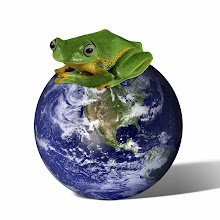From mygardenguide.com:
Botanists have discovered that the origin of Tahitian vanilla (Vanilla tahitensis), an orchid that when pollinated yields the most delectable vanilla bean on the planet, actually had its origins in the Mayan forests of Mexico and Guatemala. What’s interesting about this finding is that the Tahitian vanilla orchid is found only in cultivation and not in the wild.
Using DNA and ethno-historic analysis, Pesach Lubinsky, a postdoctoral researcher and Norman Ellstrand, a professor of genetics in UC Riverside's Department of Botany and Plant Sciences, appear to have traced Tahitian vanilla back to its evolutionary beginning as a pre-Columbian Maya cultivar. Modern day Tahitian vanilla appears to be a hybrid between V. planifolia, a species cultivated for commercial vanilla that is primarily grown in Madagascar and Indonesia, and the never cultivated V. odorata both of which grow in the tropical forests of Central America.
The research team theorized that the Mayan people created forest gardens and introduced different types of species including wild cacao and vanilla from the surrounding region. Species that had previously been geographically separated were then able to hybridize simply because they were in the same location. Eventually French sailors introduced vanilla to Tahiti from cuttings of plants growing in the Philippines that had arrived there via the Spanish trading ships that sailed between Manila and Acapulco, Mexico.
****
Once again, we are reminded that much of the pre-Columbus American continent was not the empty savage, howling wilderness that European settlers imagined it to be, but a rich, productive environment, indeed shaped by the hand of man but in which both man and wild things could co-exist -- a vast garden.
What have we done in our paltry 500 years of ownership?
Wednesday, August 26, 2009
In forest gardens ...
Posted by
Eastcoastdweller
at
4:46 PM
![]()
Labels: Native Americans, orchids, vanilla
Subscribe to:
Post Comments (Atom)















5 comments:
ecd- the Nature program this week:
FIGS AND WASPS!
On the nature channel? When?
public tv
with repeats
times vary with stations
The Queen of Trees: Photo Essay: An Extraordinary Ecosystem
The sycomore fig tree is the center of an entire ecosystem, producing several tons of fruit a year and feeding a greater variety of animals than any other kind of tree in Africa.
http://www.pbs.org/wnet/nature/
In answer to your last question...let's see....we've cut down many of the world's trees, fished out many ponds, rivers and lakes, hunted down many animals to near extinction, encroached dramatically into the territory of wildlife in our need to erect shiny steel and cement buildings...hmmm - have I missed anything?
Post a Comment